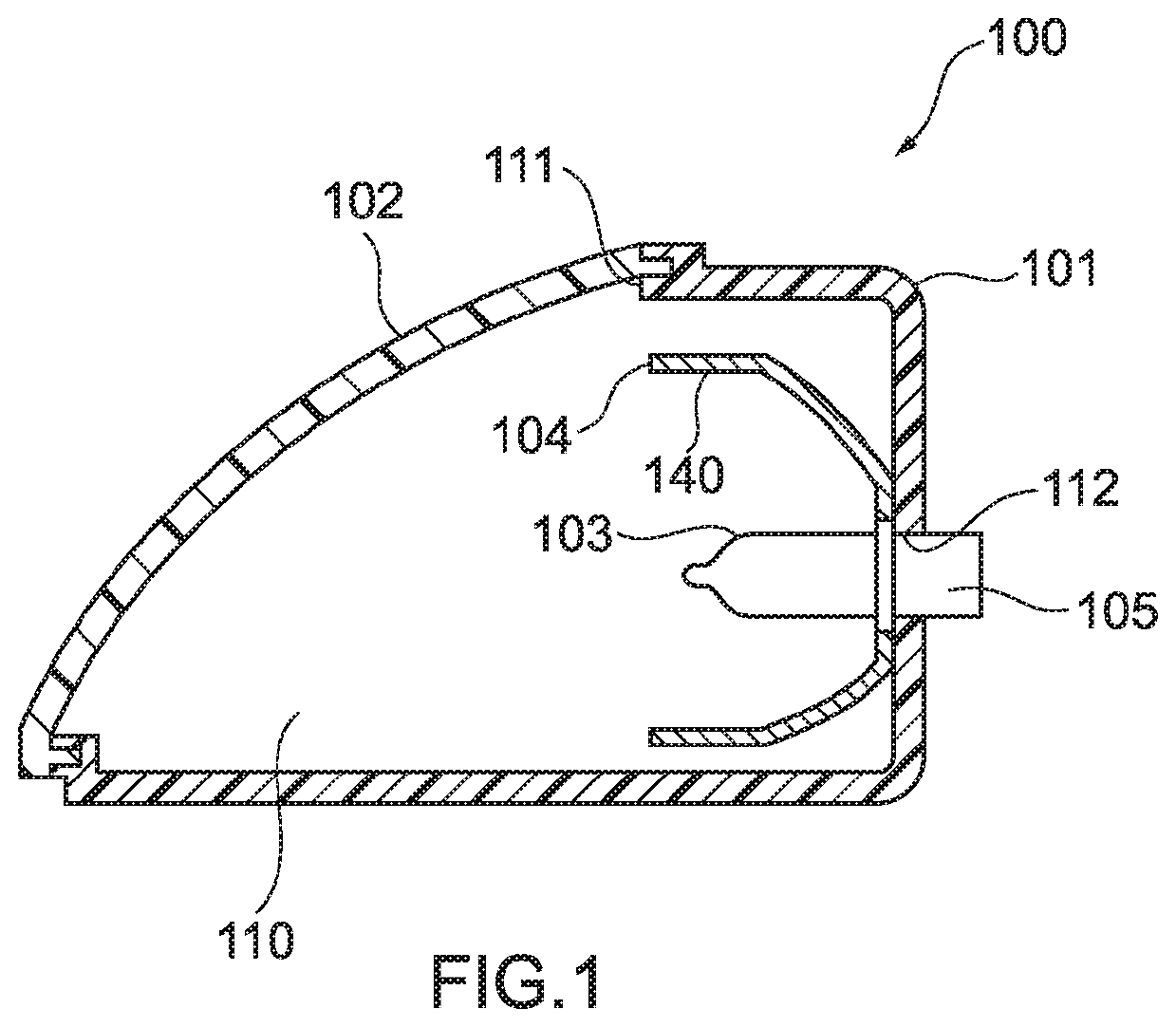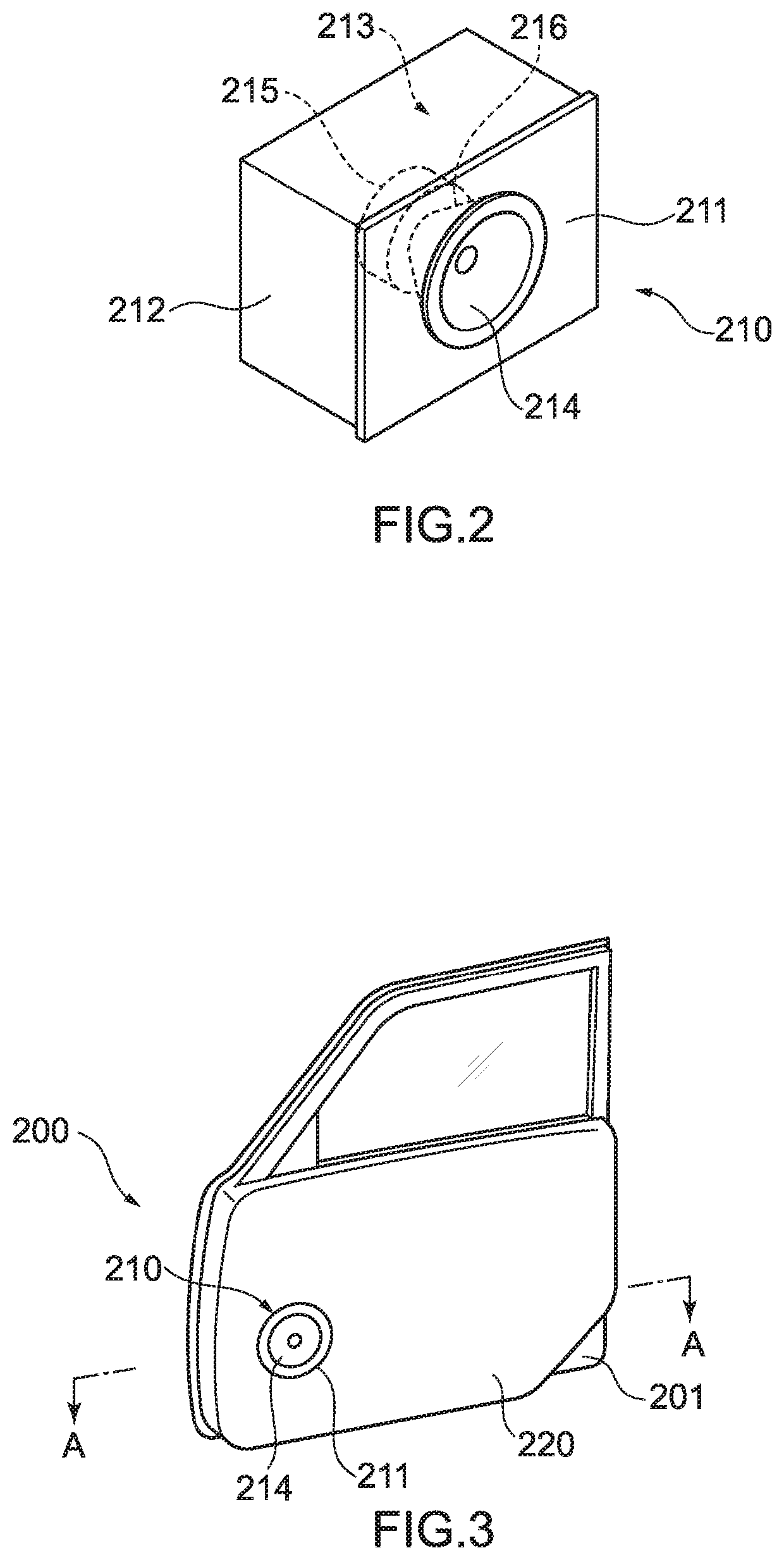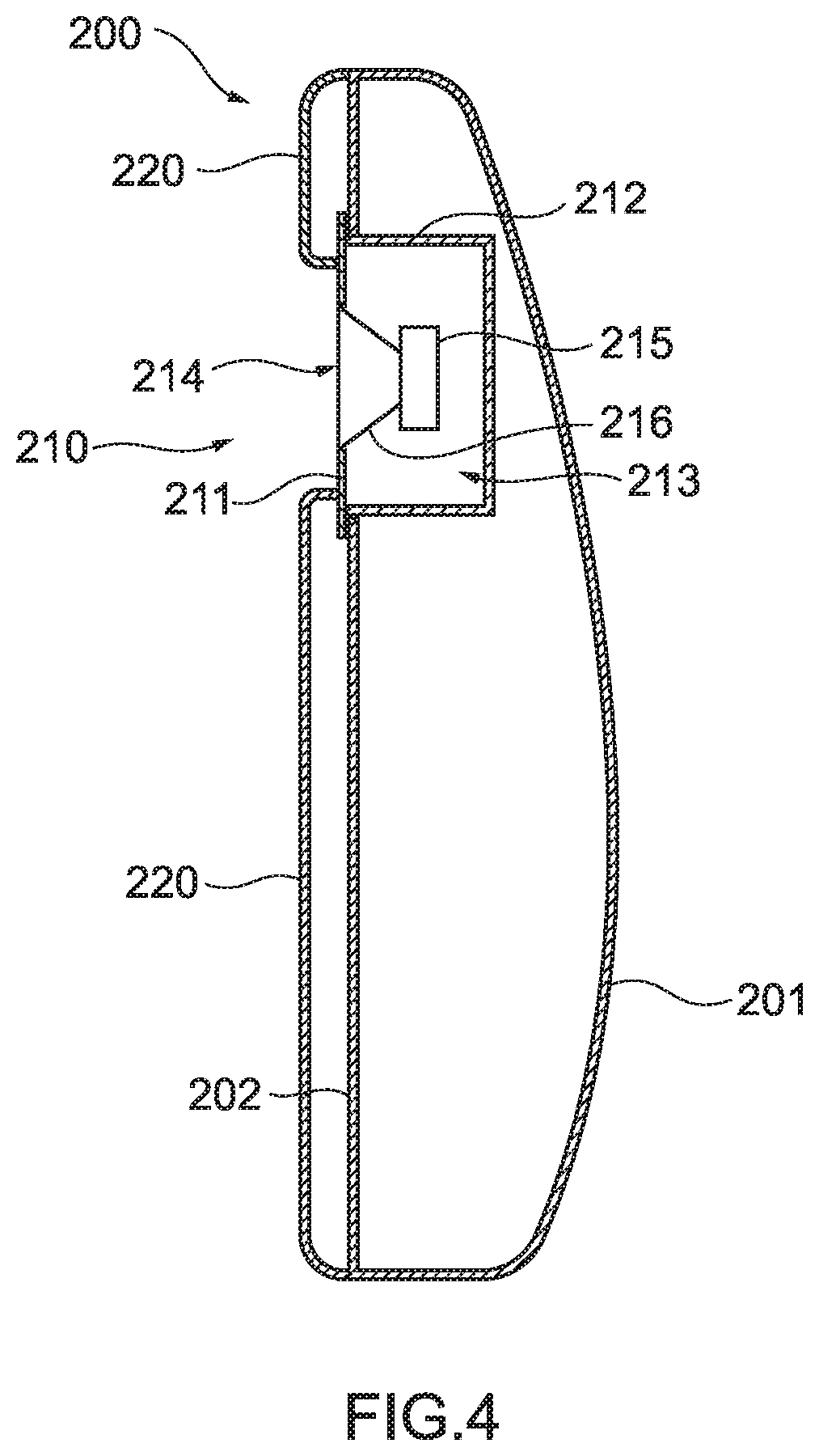Molded article
a technology of molded articles and thermoplastic resins, applied in the direction of diaphragm construction, lighting and heating apparatus, coupling device connection, etc., can solve the problems of uneven strength and size accuracy, difficult thinning and weight reduction of connection boxes, connectors, etc., and increase the difficulty of retaining strength
- Summary
- Abstract
- Description
- Claims
- Application Information
AI Technical Summary
Benefits of technology
Problems solved by technology
Method used
Image
Examples
example 1
[0215]A cellulose-reinforced thermoplastic resin was prepared by the following steps.
[0216]1) Step of Preparing Cellulose Composition
[0217]In an acetone solvent, 90 parts by mass of cellulose A was dispersed, and after 10 parts by mass of ionic compound A was mixed therein, a resultant mixture was left to stand for 12 hours or more in a container which a lid was put on while the mixture was being agitated every several hours. The lid of the container was then opened to dry the acetone solvent, and after the acetone solvent evaporated almost completely, the container was stored further in a thermostatic chamber of 80° C. for 12 hours or more for drying moisture.
[0218]2) Step of Kneading Cellulose Composition and Thermoplastic Resin
(Production of Cellulose-Reinforced Thermoplastic Resin Composition)
[0219]A cellulose-reinforced thermoplastic resin composition was produced by performing extrusion in such a way that while thermoplastic resin B was being fed to a twin-screw extruder [KZW1...
example 2
[0224]A cellulose-reinforced thermoplastic resin composition obtained in 2), the cellulose-reinforced thermoplastic resin composition containing one type of thermoplastic resin, was produced without performing the step of 3) in Example 1. Thereafter, a lamp body was prepared using this cellulose-reinforced thermoplastic resin composition in the same manner as in the step of 4) in Example 1.
example 3
[0225]A cellulose-reinforced thermoplastic resin composition containing two types of thermoplastic resins was prepared and produced in the same manner as in Example 2, except that 0.1 parts by mass of the ionic compound A based on 99.9 parts by mass of the cellulose A was compounded in the step of 1) in Example 1, and a resin obtained by mixing the thermoplastic resins A and B in such a way as to be 499:1 in terms of mass ratio was used in place of the thermoplastic resin B in the step of 2). Thereafter, a lamp body was prepared using this cellulose-reinforced thermoplastic resin composition in the same manner as in the step of 4) in Example 1.
PUM
| Property | Measurement | Unit |
|---|---|---|
| side length | aaaaa | aaaaa |
| area | aaaaa | aaaaa |
| temperature | aaaaa | aaaaa |
Abstract
Description
Claims
Application Information
 Login to View More
Login to View More - R&D
- Intellectual Property
- Life Sciences
- Materials
- Tech Scout
- Unparalleled Data Quality
- Higher Quality Content
- 60% Fewer Hallucinations
Browse by: Latest US Patents, China's latest patents, Technical Efficacy Thesaurus, Application Domain, Technology Topic, Popular Technical Reports.
© 2025 PatSnap. All rights reserved.Legal|Privacy policy|Modern Slavery Act Transparency Statement|Sitemap|About US| Contact US: help@patsnap.com



